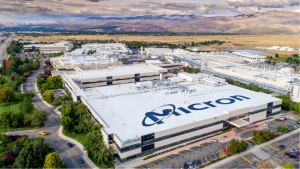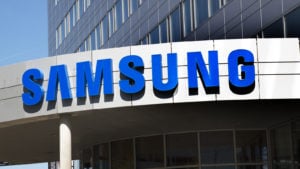![]()
The surge in demand for memory stocks underscores the sector’s growth. The burgeoning need for high-bandwidth memory (HBM), essential for Nvidia’s (NASDAQ:NVDA) AI processors, is driving the interest.
The HBM3 standard, introduced by JEDEC in January 2022, marks a significant evolution in memory technology. It offers substantial improvements over its predecessor, HBM2E. Further, it’s designed to meet the rigorous demands of high-performance computing (HPC) applications including AI, graphics, and networking. And HBM3 supports higher densities—reaching up to 32 Gb with stack heights up to 16-high, achieving a total capacity of 64 GB. Also, it doubles the speed to 6.4 Gbps compared to HBM2E’s 3.6 Gbps. This serves to enhance data transfer rates crucial for advanced computing tasks.
These enhancements make it an attractive area for investors looking at the high-growth section of the semiconductor market. Let’s explore three companies who are seizing this world of possibilities.
SK Hynix (HXSCL)
SK Hynix’s (OTC:HXSCL) share price has seen an impressive increase this year. This surge is largely attributed to the growing demand for its HBM products.
In fact, SK Hynix is renowned for producing a wide range of memory and storage solutions. These include DRAM and NAND flash memory chips. As a pivotal player in the global electronics market, SK Hynix supplies key components for computers, servers, and mobile devices.
The company recently hit a $100 billion market cap. Not only does this position SK Hynix as the second-largest company in South Korea, but also it highlights its competitive edge.
Further, SK Hynix develops memory chips that specifically cater to AI applications. SK Hynix is a stock to add to your watch list.
Micron Technology (MU)

Micron Technology (NASDAQ:MU) is a U.S.-based company specialized in DRAM, NAND, and NOR flash memory products. Its innovations power technologies including data centers, consumer electronics, mobile devices and automotive applications.
In February, the company announced the commencement of volume production for its High Bandwidth Memory 3E (HBM3E) solution. A key aspect of this product announcement is that Micron’s 24GB 8H HBM3E is integrated into Nvidia’s H200 Tensor Core GPUs. The latter are expected to ship in the second quarter of 2024.
Further, it boasts a pin speed exceeding 9.2 Gb/s, translating to over 1.2 TB/s of memory bandwidth. This breakthrough allows for rapid data access across AI accelerators, supercomputers, and data centers, facilitating quicker computations and analyses. One of the standout features of Micron’s HBM3E is its exceptional energy efficiency, consuming roughly 30% less power compared to other HBM3E products.
Moreover, the 24 GB capacity of Micron’s HBM3E paves the way for seamless scalability in AI applications. This memory solution ensures that data centers are equipped with the necessary bandwidth to handle the tasks at hand.
Micron’s stock soared after Bank of America (NYSE:BAC) Securities raised its price target from $120 to $144. This affirmation adds confidence in Micron’s potential to meet rising AI-driven demand for high-bandwidth memory.
Samsung Electronics (SSNLF)

Although renowned for its smartphones, TVs, and memory chips, Samsung Electronics (OTC:SSNLF) leads innovation across various tech domains. Samsung is the world’s largest memory producer, placing it at the forefront of the AI revolution.
Also, the company’s stock surged earlier this year on a report that it is poised to potentially join SK Hynix as a supplier for Nvidia. This development caused Samsung’s shares to soar.
Additionally, Samsung unveiled its fifth-generation HBM3E chip, marking an industry milestone as the first 36-gigabyte, 12-stack high-performance memory chip. Specifically, Nvidia’s graphics processing units could greatly benefit from Samsung’s HBM3E chips. As a result, Samsung Electronics is now considered a top memory stock, given the rapid increase in HBM chip demand.
On the date of publication, Shane Neagle did not hold (either directly or indirectly) any positions in the securities mentioned in this article. The opinions expressed in this article are those of the writer, subject to the InvestorPlace.com Publishing Guidelines.






